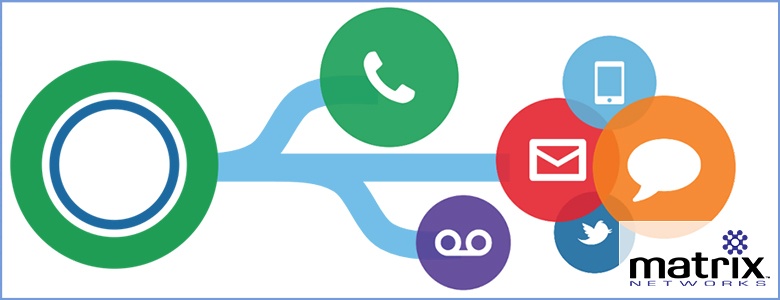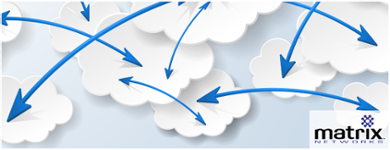
Communications is going through an unpredictable evolution. Ten years ago our businesses primarily communicated via a traditional desk phone and email. Today we use our cell phones and desktops to utilize SMS, LinkedIn, chat clients like Slack, face to face video, Facebook, Twitter, Email and much more to communicate with co-workers, family and clients. This has left many businesses struggling to keep the conversations going in the correct medium. The tools we deployed even 5 years ago are horribly out of date, meaning large swathes of your customer base are not connecting with your team, choosing a more modern competitor. This is clearly seen in companies like Amazon and ZOOM+ as they quickly gain market share, capturing their intended clients by embracing the new communications and technology shift. We must make this shift to meet our clients where they live, or risk losing the relationships we depend on.
The good news for all of us is there are solutions out there that can help us move in the right direction. It takes good tools and a sound strategy. The future of communication with our clients should be cloud based for three primary reasons: to evolve with communications technology, to integrate their core data systems and to maintain uptime. Through these improvements our businesses can realize new revenue, boost productivity and expect clients to return for another great experience.
Evolving
With cloud contact centers your communication tools continue to evolve with the communications industry, ensuring you are always meeting your clients where they want you to be. As Facebook and Twitter have grown in popularity for users, so has the need for our businesses to engage them on the platforms. Although you may have individual tools to accomplish some of these things, forcing agents to check many tools to communicate while distorting performance and reporting. Top cloud contact center platforms will offer integrations into all of these new communication concepts, routing the conversations to agents who solve their problems, thanking them for their review or encouraging them along in the "buyer's journey." If there is anything we can be sure of, this evolution is far from over. We must remain nimble and adapt to the market. With traditional hardware systems the moment you deploy your solution you are lagging the market, with cloud you receive the very newest tool sets as they become available.
Integrating your Applications
The Contact Center you choose should do more than just operate in a bubble, that is communicating with your clients without interaction with your critical data. For real success to take place the Contact Center needs to communicate with your applications and people. Most of us are running some form of Customer Relationship Management (CRM) or Enterprise Resource Planning (ERP) but our phone system doesn't interact with it. We should be using that important data to take better care of our clients. When an inbound call hits an agent's phone it seamlessly pops up the client's account, saving valuable time and providing a better experience. Another popular concept is the idea of routing the call to their specific rep based on the data you have collected like the last person they have talked with, the specialist in their product or your foreign call center. The options are limitless and powerful, imagine it and then make it happen, current systems allow us to think that way.
Uptime
Nothing is more painful than having communications with your client cut off. With a traditional hardware solution you must build your own redundancy. The short version of the list would be redundant power, server equipment, telephone network connections and network equipment. This is costly and only ties you closer to an aging legacy product. In comparison cloud contact centers have already made an investment greater than any typical business can afford. Redundant Internet, redundant servers, redundant phone network, redundant locations, etc., all included in a cloud solution. In the event of failure on their side redundant systems take over, eliminating downtime. In the event of a local outage at your locations, calls can be re-routed to cell phones, back-up answering services or backup auto-attendant messaging. With cloud contact center we can count on being available to our clients.
Mortgage Servicing Improved
A client of ours, a mortgage servicing company based in Beaverton Oregon, was running a Mitel cloud platform from a local telecom. The solution lacked a formal contact center of any sort, instead using a basic workgroup application. Reliability was a huge struggle with days of outages, no calls inbound or outbound being received. Integra's platform lacked an ability to automate outbound calls, critical for a company dependent on collecting on mortgage debt. Since deploying their cloud contact center solution they have seen an increase of more than $250,000 in revenue over 4 months due to automation and prioritization of their outbound calling. When the Integra Mitel solution failed on a Tuesday morning the calls automatically re-routed to the agent's cell phones bypassing the Mitel and ensuring every customer was able to connect with an agent. By deploying their cloud contact center Aspen Capital has seen a strong return on investment, improved the morale in the contact center and ensured zero downtime.
The Path Forward
Investing in an on premise contact center today would take a very specific situation. In nearly every case the advantages of the cloud environment offer too much to refuse; new tools, improved performance and unlimited support. Being always available, improving the customer experience and staff efficiency can be counted on to lead to positive financial impacts that benefit all. With cloud contact center we don't have to be a Fortune 100 company to get the tools, the cloud has leveled the playing field.
Next Article: 5 Keys to Building a Modern Cloud Network
Author: Kyle Holmes



.svg%20(1).png?width=55&name=1200px-Logo_of_YouTube_(2015-2017).svg%20(1).png)

